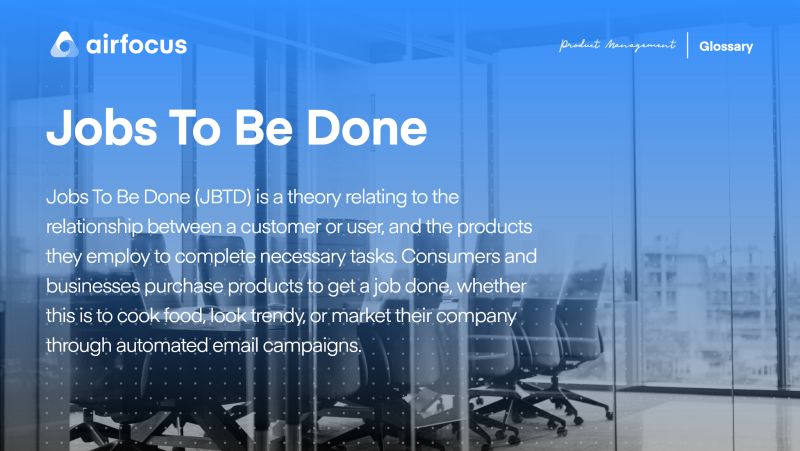Jobs To Be Done
What are Jobs To Be Done (JBTD)
Definition of Jobs To Be Done
Jobs To Be Done (JBTD) is a theory relating to the relationship between a customer or user, and the products they employ to complete necessary tasks. Consumers and businesses purchase products to get a job done, whether this is to cook food, look trendy, or market their company through automated email campaigns.
Goals differ from one product type to another, and purchase decisions can be affected by various factors, such as age, income, location, occupation, etc. A key part of the Jobs to be Done theory is developing a deeper understanding of users’ problems and motivations in order to create more effective solutions.
Product teams can utilize the Jobs to be Done framework to gain valuable insight into users’ motivations and maximize a product’s competitive edge. Designers and developers can create products tailored to do the job customers are looking to complete.
Essentially, the focus is less on the product itself and more on what users need to achieve.
Who created the Jobs to be Done framework?
The Jobs to be Done framework was introduced by Tony Ulwick in 1991. Ulwick is the founder of Strategyn, an innovation consulting company, and wrote a groundbreaking book titled Jobs to Be Done: Theory to Practice.
The strategy went on to incorporate the Jobs to be Done framework (known as Outcome-Driven Innovation) into its consulting, helping a huge number of businesses to achieve success with their own products. For example, Strategyn first applied the Jobs to be Done framework when working with a business developing medical devices, Cordis Corporation.
The brand wanted to revise its angioplasty balloons line — so really, life or death innovation here! — and Strategyn conducted in-depth user research to identify their desired outcomes. This enabled Cordis Corporation to release 19 successful products in 1993, boosting its market share by around 20%.
Since then, the Jobs to be Done theory has been employed by countless product teams — some as life-changing as Cordis Corporation, some as every day as apps and websites.
How is Jobs to be Done used in product development?
A successful product comes down to much more than a slick design and a competitive price. It’s about recognizing what the product can do for customers, why addressing their pain points is so important, and the best possible outcome of using the product.
For example, a startup on a limited budget may be looking to ‘hire’ an email marketing automation platform to reduce the amount of time they currently spend manually sending lead generation emails. Their company is growing and they have so many customers that automation is becoming essential to do the ‘job’ efficiently.
A product development team building an email marketing automation platform would use this knowledge to ensure their product streamlines customer communications. But further research and analysis might reveal that target users are looking for more than just a time-saving solution. They want to create tailored email campaigns that build lasting relationships, direct traffic to their website, and boost conversions.
The overall desired outcome wouldn’t just be saving time: it would be helping the business grow and succeed in years to come.

General FAQ

Glossary categories
All product feedback in one place

Experience the new way of doing product management







